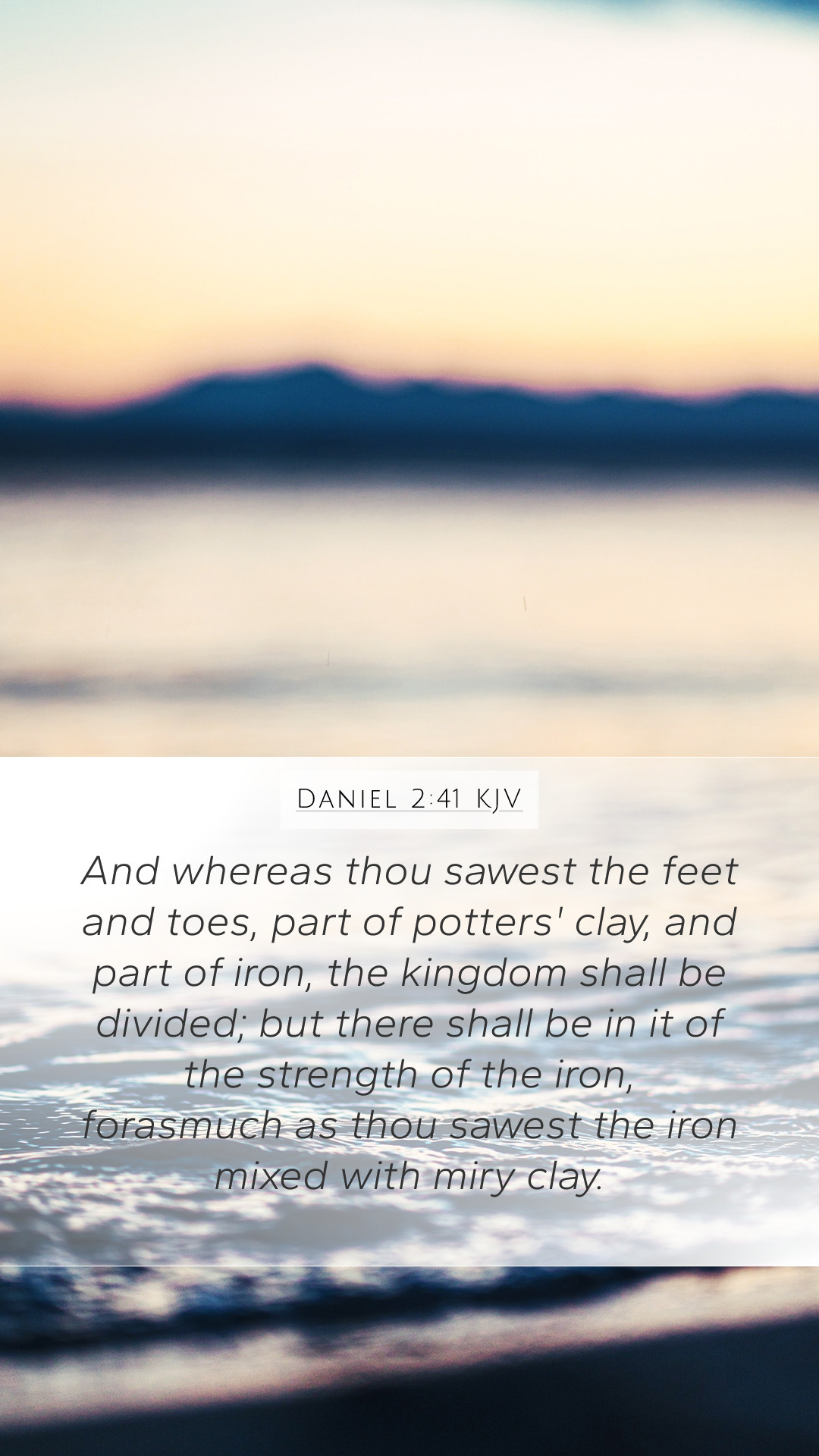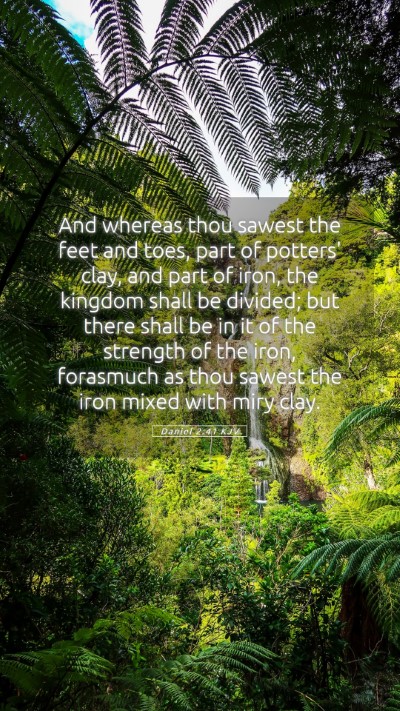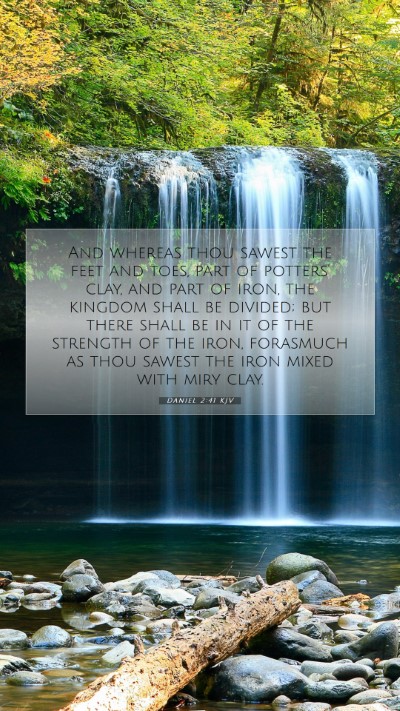Understanding Daniel 2:41
Daniel 2:41 states:
“And whereas thou sawest the feet and toes, part of potters' clay, and part of iron, the kingdom shall be divided; but there shall be in it of the strength of the iron, forasmuch as thou sawest the iron mixed with miry clay.”
This verse is part of a revelation received by the prophet Daniel concerning King Nebuchadnezzar's dream of a great statue, which symbolizes various kingdoms throughout history. Let's delve into its meaning with insights from various public domain commentaries.
Verse Meaning and Interpretation
The verse highlights the composition of the feet and toes of the statue, which are made from a mixture of iron and clay. This imagery indicates a kingdom that is mixed, suggesting strengths and weaknesses. Here’s a closer look at major components of this verse as understood through commentary:
-
Symbolism of Iron and Clay:
Iron symbolizes strength and durability, often associated with powerful empires such as Babylon. Clay, however, denotes fragility and instability. The mixture evokes the idea of a kingdom that may seem strong but is inherently weak due to its divided nature.
-
Divided Kingdom:
As noted by Matthew Henry, the reference to a 'divided kingdom' indicates a future political landscape where alliances and divisions will lead to instability and conflict. The nature of the feet being a blend suggests that this kingdom might be a coalition of various factions.
-
Prophetic Nature:
Albert Barnes emphasizes that this verse forms part of a prophetic vision regarding future kingdoms that will rise and fall. It contextualizes the historicality of such nations as the Roman Empire, which saw both strength and division.
-
Significance of the Toes:
The number of toes (ten) possibly represents the completeness or entirety of this future kingdom as it has factions or nations that compose it. Adam Clarke elaborates on this by linking it to historical evidence of ten kingdoms emerging during the decline of the Roman Empire, showcasing that God’s prophecies ultimately unfold as outlined.
Historical Context
Understanding this verse demands a grasp of historical timelines and biblical prophecy. Gods’ declarations through Daniel emerged in a time of Babylonian supremacy, signaling a shift in power dynamics among nations.
Further, as noted in various commentaries, the prophetic utterance indicates not only historical events but also spiritual truths about human governance and divine sovereignty.
Application to Daily Life
In applying this verse to contemporary life, believers are encouraged to consider the nature of systems of governance. The combination of iron (strength) and clay (fragility) speaks to the complexities within political structures, reminding Christians to approach worldly systems with discernment, recognizing their transient nature.
Commentaries on Daniel 2
Here are some relevant additional insights from commentaries that further explain the intricate meanings within this verse:
- Matthew Henry: Discusses the overall trajectory of kingdoms and God's sovereign will over history.
- Albert Barnes: Provides exegesis about each element of the statue, particularly on how they relate to ancient kingdoms.
- Adam Clarke: Explains the eschatological implications of the statue's formation and what it signifies for future generations.
Cross References
This verse can be linked to several significant passages within the Bible that enhance its understanding:
- Revelation 17:12-14: Discusses ten kings that will unite against the Lamb.
- Daniel 7:24: Referring again to the ten horns, connecting to the interpretation of empires.
- 2 Thessalonians 2:3-4: Alludes to the man of sin and the deception that may occur in a divided kingdom.
Conclusion
In summary, Daniel 2:41 serves as an important prophetic statement about the nature of future kingdoms—highlighting division, strength, and ultimately, the sovereignty of God in world affairs. For those seeking a deeper understanding of Bible verse meanings and interpretations, this verse exemplifies the need for comprehensive biblical study and reflection.


